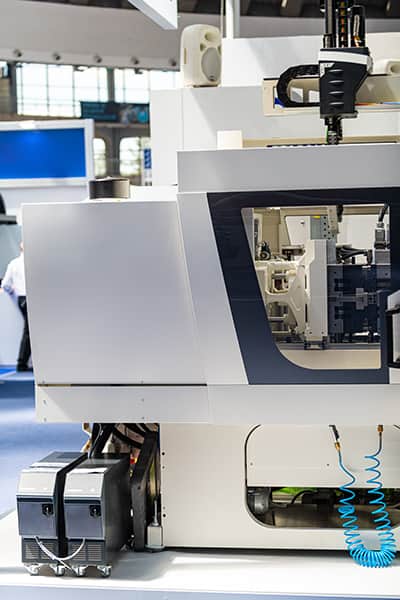Intro
If you’re looking to make a lot of units, you need to pick out the right tooling. When it comes to injection molding, the two big options are production and prototype tooling. The price difference between the two can be multiple orders of magnitude, so you’ll need to make the right choice.
In an effort to help you, our tooling experts put together this guide. We’ll be talking about the differences between production and prototype tooling.
What Is Production Tooling?
In injection molding, “tooling” refers to the mold used. This mold will fill up with hot material, cool down, and force the material into a certain shape. Once extracted, you’ll have a solid version of the product.
With production tooling, the tooling used is designed to last a long time, be highly repeatable, and give great results. This type of tooling is used specifically for large production runs of injection molded products, like the plastic body and frame of your computer monitor.
The tooling used is metal, and very durable. Manufacturers can run around 250,000 units through a single tool before it needs to be replaced. This number can change dramatically based on some manufacturing variables, but it’s a good rule of thumb for you to know.
What Is Prototype Tooling?
Prototype tooling captures the other end of the spectrum. Instead of running 24/7 for days on end, this type of tool will only be used a handful of times. It might only run 100 units before it needs to be replaced.
The purpose of a prototype tool is to give the user the ability to make units, test them, and change the design. They’re less expensive and easier to make, but they won’t last as long or provide the same rigidity or tolerances as production tooling.
With a prototype tool, you can make a few physical copies of your 3D CAD design and see how practical it is. It gives designers the ability to workshop the design and make changes before spending big money on a production tool.
The Differences Between Production and Prototype Tooling
Now, let’s talk about the major differences between production and prototype tooling. When it comes to getting tooling of your own, knowing the difference can save you a lot of time and money.
Quantity of Production
The biggest difference is how many units you expect to run on the tool. When it comes to prototyping, you’re typically going to make very few parts. After all, you’re just prototyping the idea, working out any problems, and proving out the concept. In re
With production injection molding, there’s no telling how many units will be run. In consumer items, it’s not uncommon for production runs to go into the millions and beyond (replacing the tooling along the way)
Uses Hard or Soft Tooling
You’ll be able to tell the difference between production and prototype tooling pretty easily — just give it a squeeze. Production tooling uses hard metals while prototype tooling uses soft, rubber-like plastics.
After a few dozen shots, the soft tool will start to wear out. Since it’s used for a prototype tool, this is no big deal.
Overall Cost and Turnaround Time
Production tooling is almost always more expensive than prototype tooling. Instead of using a soft silicone, production tooling will use sturdier steel or aluminum alloys. Making molds out of metal is a lot more expensive, and also requires more time upfront.
The tradeoff is that the metal molds last much, much longer. It’s less expensive to make a single production tool than run 200,000 units than it is to make 2,000 prototype tools to run the same amount of units.
Basically, a production tool will cost more money and time upfront, but will save more in the long run.
The Intended Use
Just to reiterate, the intended use for a prototype and production tool are very different. In fact, there’s no overlap between the two from a consumer’s perspective.
You use one tool if you want to make hundreds of thousands of a unit, and the other tool is used to make a maximum of 100 units.
Prototype tooling is used to prove out a concept and do industry-required testing before a part goes to market. Production tooling is used to keep up with the demand of your company — it creates parts repeatably and quickly, allowing you to stock shelves with your product.
Conclusion
Now that you understand the differences between production and prototype tooling, you’re ready to start your injection molding project. If you want a high-quality shop that can help out, you can rely on Rapid Axis.
We’ve been in business for a long time, and we have injection molding experts on staff that can answer your questions and provide you with the perfect tooling for your project. We also run injection molding in-house. Reach out to us today for a free quote.
